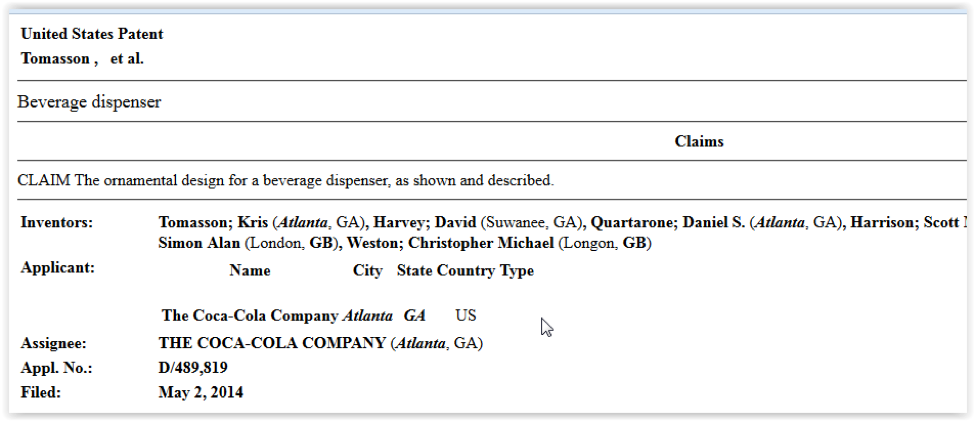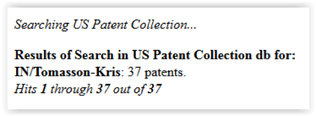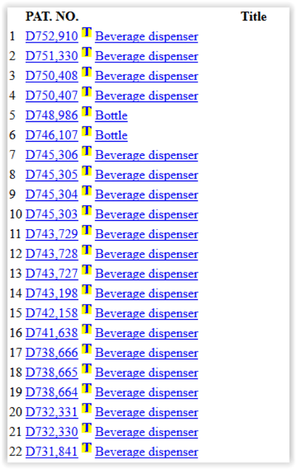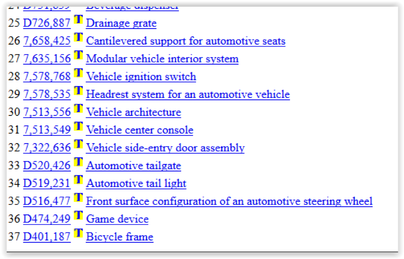 In a world where wealth now includes mining rights, fracking revenue, and other intangible assets like patents, copyrights, and trademarks, it can be confusing to figure out whether some assets add value to a prospect’s capacity rating. Here, we'll explore the intrinsic value of patents and how to include them in a prospect’s profile. When I talk to data vendors about their offerings, I always ask for patent data. When I make the same comment to my peer consultants, I get pushback. The argument in our community against searching patents are twofold:
We tend to think of things that we can’t easily value as having no value. That’s why we stick with real estate ownership as the core of our capacity ratings. However, patents do bring value to their owners, and it is worth our time to find them for our prospects who are inventors. In some situations, patents are listed on the balance sheet of a company in the category of intangible assets. Only if a patent is purchased from another company would a company have to report its value; however, its lifetime use (20 years in the U.S.) does contribute to a company’s earnings. Let’s look at an example, then, of using a patent search to find prospects. For instance, let’s say that a sample organization discovers that a trustee was a C-level officer at Coca-Cola and you want to check whether there are prospects who work at that company. The organization can use a screening or relationship mapping service to find related officers and/or directors for Coca-Cola that may have worked there at the same time the trustee did. After this work, the organization staff find that Kris Tomasson is a prospect with moderate annual giving. To round out the profile on him, staff look for any patents where he is an inventor. Let’s take a look at one of Mr. Tomasson’s patents that was assigned to Coca-Cola: We notice that the assignee is The Coca-Cola Company, confirming our paradigm that Kris Tomasson does not directly gain wealth from this patent. We don’t know what his compensation is for inventing patented designs. However, let’s look at all of Mr. Tomasson’s listed patents: Okay, what are they? We see a lot of design work for Coca-Cola. What else? Wait – Mr. Tomasson was designing stuff for automobiles? And bikes? And game devices? Now we are interested in this prospect, because we know that he is associated with our organization but we have never noticed him before. We go straight to LinkedIn: Here is his employment history as reported on his LinkedIn page: And now we see these wealth indicators:
But Do We Have to Look Everyone Up One at a Time? Now our sample organization has a dilemma: Do the researchers want to look up patents for every prospect in the database? Or pass the entire database through the patent search function? We do have access to all the patents in the United States. The US Patent Office has an agreement with Reed Tech to provide patent data for free, without restriction on use, to the general public. See here: patents.reedtech.com/patent-products.php The catch is that the data is stored in xml files. That is, we need a special program to parse the data into text files before you write the program in your local reporting or database management program to match them to the names, cities, and states from your database. That means that you need a talented programmer to set this up. If you have one, she might really enjoy this kind of challenge. A good article on the considerations for using Python for extracting the xml files to text is here: funginstitute.berkeley.edu/wp-content/uploads/2013/06/Extracting_and_Formatting.pdf The actual Python code is here: github.com/funginstitute/patentprocessor/ But Is It Valuable? Coca-Cola mentions its patents in its 10K report: “Our Company owns numerous patents, copyrights and trade secrets, as well as substantial know-how and technology, which we collectively refer to in this report as ‘technology.’ This technology generally relates to our Company’s products and the processes for their production; the packages used for our products; the design and operation of various processes and equipment used in our business; and certain quality assurance software.” (Coca-Cola’s 10K for 2014, p. 10). Mr. Tomasson, in other words, contributed to one of the focused technology efforts at Coca-Cola. He was certainly a valued employee, but we don’t know what his compensation was before this work, so we used other resources to see if we could estimate it. Glassdoor.com lists several Coca-Cola employees and notes that only upper management gets bonuses. But how one gets a bonus is not listed. Nothing in the 10K or the corporate proxy mentioned a bonus program for inventions, so we opted not to place any value on these patents. The other catch is that patents that Coca-Cola invents itself (or are assigned to Coca-Cola upon invention) do not have to be reported. So we are not able to get a complete estimate of Mr. Tomasson’s work. However, Mr. Tomasson’s patents assigned to Coca-Cola dated from 4/14/2015 through 4/5/2016 number 25 patents. Coca-Cola, from this search… …applied for 71 patents, meaning that Mr. Tomasson contributed to more than one third of Coke’s new patents in this time period. This information brings value to his capacity estimate, even if it can’t be quantified.
Wrap Up: Write Up These patents should not be listed on this prospect’s asset list if a specific value for them is required by your database. Instead, they would be added into your database as a financial note, like this: "Mr. Tomasson was listed as the inventor for 37 patents, with more than half assigned to Coca-Cola, his former employer. Information on the value of these patents is not reported, since companies do not have to report internally invented patents. However, between April 2015 and April 2016, Coca-Cola applied for 71 patents and Mr. Tomasson was listed as the primary inventor for 25." I believe that patents, like any other intellectual property, add value to a prospect’s wealth. However, since we can’t value them in exact dollars, we tend to ignore them. Our tendency is to rate prospects based on what we can see, which, again, is why we document real estate so heavily. However, imagine having Lowell Lincoln Wood, Jr., as your prospect. He is listed on 1,278 patents. Wouldn’t that be an indicator of capacity? If you have comments or questions, be sure to comment below or tweet us @Staupell.
0 Comments
Leave a Reply. |
Keep Informed
|
Photos from jeffdjevdet, SMPAGWU









